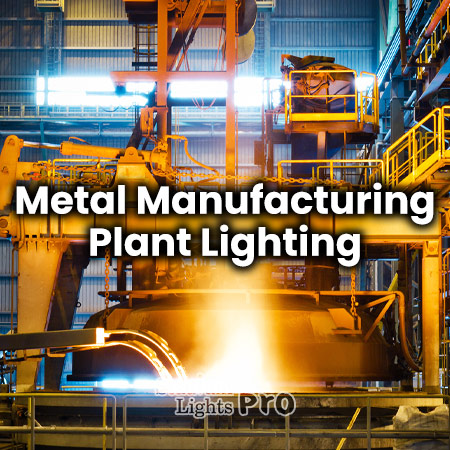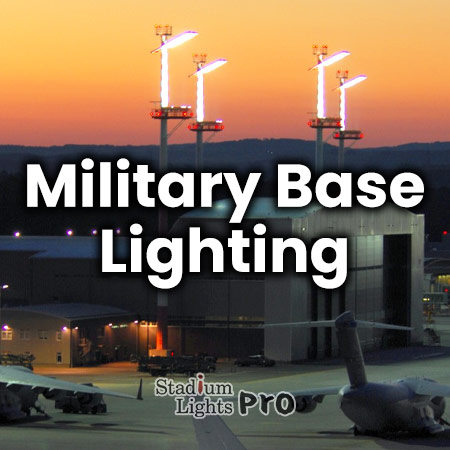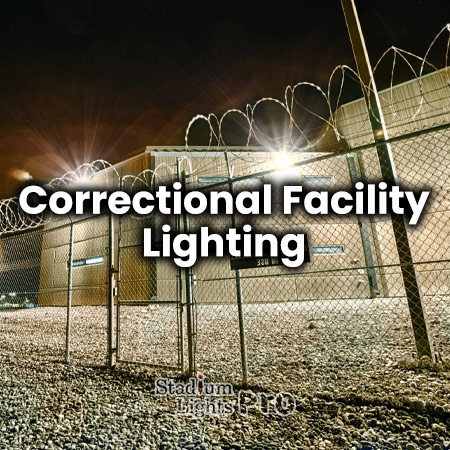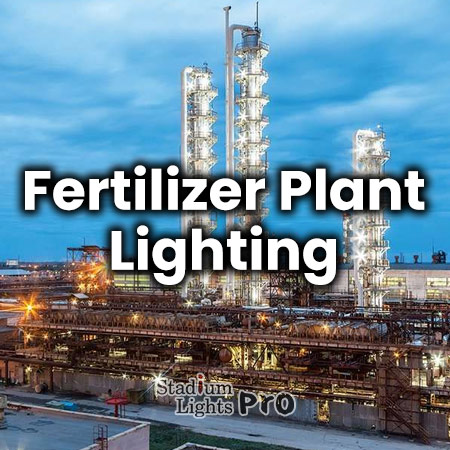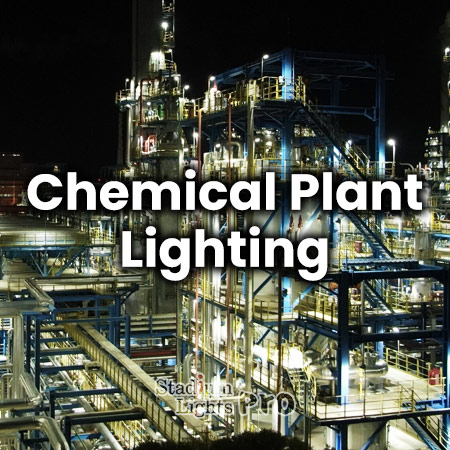For decades, foundries and metal manufacturing plants relied on traditional lighting sources, such as incandescent and fluorescent bulbs. However, in recent years, the adoption of LED (Light Emitting Diode) lighting has been on the rise, transforming the way these industries illuminate their operations. We are going to explore the benefits and applications of LED foundry lighting and its impact on metal manufacturing plants.
The evolution of foundry and metal manufacturing lighting
Historically, foundries and metal manufacturing plants have had unique lighting requirements due to the harsh and challenging working environments. Traditional lighting solutions struggled to meet these demands effectively. Incandescent bulbs were inefficient and generated excess heat, while fluorescent lights were prone to flickering and had a relatively short lifespan.
The advent of LED technology revolutionized lighting across industries, and foundries and metal manufacturing plants were no exception. LED lighting not only addressed the shortcomings of traditional lighting but also offered numerous advantages that have made it the preferred choice for these applications.
Advantages of LED lighting in foundries and metal manufacturing plants
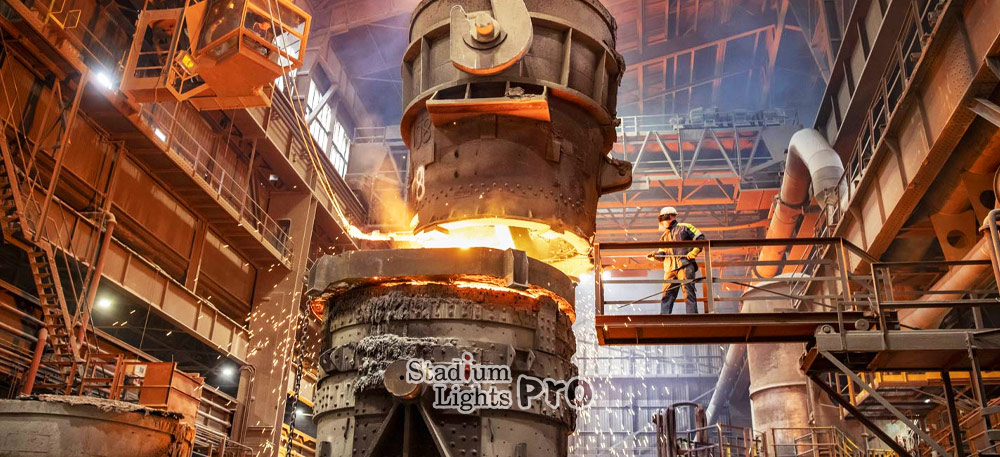
Energy efficiency
LED lights consume significantly less energy compared to traditional lighting options, resulting in reduced electricity costs. This energy efficiency not only lowers operational expenses but also contributes to a greener and more sustainable manufacturing process.
Longevity
LEDs have an exceptionally long lifespan, often exceeding 120,000 hours of continuous operation. This translates to reduced maintenance and replacement costs, as well as decreased downtime for maintenance activities.
Durability
LED lighting fixtures are rugged and resistant to vibrations, making them ideal for the harsh environments found in foundries and metal manufacturing plants. They are also less prone to damage from temperature fluctuations.
Instant illumination
LEDs provide instant full brightness without warm-up time, ensuring that workers have adequate lighting as soon as they switch them on.
Enhanced color rendering
LED lights offer better color rendering compared to traditional lighting sources, which is crucial for tasks that require precise color differentiation, such as quality control and inspections.
Dimmability
Many LED fixtures are dimmable, allowing for adjustable lighting levels based on specific tasks and needs. This flexibility enhances worker comfort and productivity.
Safety
Improved lighting quality enhances overall safety in these hazardous environments by reducing the risk of accidents and improving visibility.
How many lux to light the different areas of metal manufacturing plants and foundries?
General work areas
In large open areas where general manufacturing activities take place, a recommended lux level might be around 150 to 300 lux. This provides adequate visibility for routine tasks and helps maintain a safe working environment.
Task and precision work areas
Areas where precision tasks like welding, machining, quality control, or detailed inspections are conducted require higher illumination levels. Lux levels in these areas typically range from 500 to 1,000 lux or even higher, depending on the specific tasks and safety considerations.
Loading docks and outdoor areas
Outdoor areas like loading docks and yard spaces require lighting to ensure safe operation during both day and night. Recommended lux levels for outdoor areas typically range from 100 to 300 lux.
Staircases and exits
Staircases, exit routes, and emergency exit areas should be well-lit for safety. Lux levels in these areas should meet local safety regulations and often range from 100 to 300 lux.
Hazardous areas
In areas where hazardous materials or potentially explosive atmospheres are present, lighting levels must meet safety standards. Explosion-proof LED lights may be used to provide adequate lighting while ensuring safety. The lux levels in these areas will depend on the specific safety requirements but should be sufficient to perform tasks safely.
Maintenance and inspection areas
Areas where equipment maintenance and inspections occur should have sufficient illumination to ensure accurate assessments. Lux levels in these areas can range from 300 to 750 lux or higher, depending on the specific tasks.
Emergency lighting
Emergency lighting should provide a minimum of 1 lux along the path of egress during power outages or emergencies. This ensures safe evacuation.
What lights are used in foundries and metal manufacturing plants?
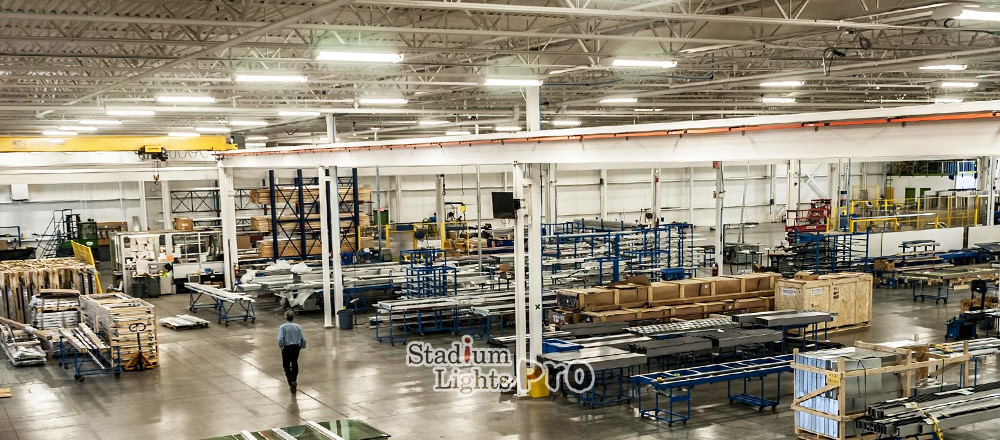
High bay LED lights
High bay LED lights are specialized fixtures designed for large open spaces with high ceilings, such as those found in foundries and metal manufacturing plants. They are typically mounted at significant heights, often around 15 to 50 feet above the floor. These lights provide powerful and uniform illumination across the workspace. High bay lights are essential for maintaining a safe and productive environment, as they ensure that workers have adequate visibility to perform their tasks effectively. They come in various designs and wattages to accommodate different ceiling heights and lighting requirements.
Task lighting
Task lighting refers to lighting fixtures that are strategically placed to provide focused and intense illumination on specific workstations or areas where precision tasks are performed. In foundries and metal manufacturing plants, tasks such as welding, cutting, machining, and quality control require excellent visibility and precision. LED task lights are designed to deliver bright and concentrated light to assist workers in performing intricate tasks accurately.
Explosion-proof LED lights
In areas where flammable gases or combustible dust particles are present, safety is paramount. Explosion-proof LED lighting fixtures are engineered to meet stringent safety requirements. They are designed to prevent sparks or ignition sources that could lead to potentially catastrophic explosions. These fixtures are constructed with robust materials and sealing mechanisms to contain any potential hazards. They are a critical choice in environments where the risk of explosions is a concern.
Heat-resistant lights
Foundries and metal manufacturing plants are known for generating extreme heat during various processes like casting and hot metal processing. Heat-resistant LED lights are designed to withstand high temperatures without compromising their performance or safety. These lights are used in areas where traditional lighting solutions would be prone to damage or failure due to excessive heat.
Waterproof lights
Certain areas within these facilities may be exposed to moisture, water, or chemicals, making waterproof LED lights a necessity. These fixtures are rated with appropriate IP (Ingress Protection) ratings to ensure they remain consistently reliable in wet or damp environments. They are commonly used in areas such as washdown zones or locations prone to splashes and spills.
Dustproof lights
Metalworking facilities often generate dust and particulate matter, which can compromise the effectiveness of lighting fixtures over time. Dustproof LED lights are designed to prevent the ingress of dust and debris, ensuring that the lighting remains effective and doesn’t require frequent cleaning or maintenance. They are a practical solution for maintaining consistent illumination in dusty environments.
Vibration-resistant lights
Heavy machinery and equipment in metal manufacturing can create significant vibrations, which may dislodge or damage lighting fixtures. Vibration-resistant lighting fixtures are specifically designed to withstand these vibrations, ensuring that the lights remain securely in place and operational.
Emergency lighting
Emergency lighting systems, including exit signs and emergency fixtures, are crucial for worker safety in the event of power outages or other emergencies. These lights are equipped with battery backups to ensure continuous illumination, allowing workers to safely exit the facility or navigate in low-light conditions.
Dimmable LED lights
Dimmable LED lights provide the flexibility to adjust lighting levels according to specific tasks and preferences. This feature improves worker comfort and productivity by allowing them to customize the lighting to suit their needs.
UV-resistant lights
For outdoor areas within these facilities, such as yards, parking lots, or loading docks, UV-resistant LED lights are used to withstand the harmful effects of sunlight over time. These lights are designed to maintain their performance and longevity even when exposed to prolonged sunlight.
Color-corrected lights
In quality control and inspection areas where accurate color rendering is essential, color-corrected LED lights are employed. These lights ensure that workers can accurately detect flaws or discrepancies in metal products by providing consistent and accurate color representation.
Cooling systems
Some specialized lighting fixtures come equipped with built-in cooling systems to dissipate heat effectively. This is especially essential in areas where high temperatures are generated, ensuring that the lighting fixtures remain cool and functional even in extreme conditions.
Best foundry lighting design
Designing an effective lighting system for a foundry is crucial for ensuring safety, productivity, and the quality of work performed in this challenging environment.
1. Assessment of facility layout and work areas
Begin by conducting a thorough assessment of the entire foundry facility, including the layout, work areas, and processes. Identify the specific tasks performed in each area and any potential hazards.
2. Understand illuminance requirements
Determine the required illuminance levels (lux) for each area based on the tasks being performed and any safety regulations or standards that apply. Refer to industry-specific guidelines and local regulations as necessary.
3. Select appropriate lighting fixtures
Choose lighting fixtures that are suitable for the foundry environment, considering factors such as heat resistance, dust and moisture resistance, and vibration resistance. For general illumination, high bay LED lights are often used, while task-specific areas may require specialized fixtures such as task lights or explosion-proof lighting.
4. Placement of fixtures
Position lighting fixtures strategically to ensure even and uniform illumination across work areas. In task-specific areas, focus on providing directed and bright lighting to aid workers in performing their tasks with precision.
5. Emergency and exit lighting
Ensure that the facility has appropriate emergency and exit lighting in accordance with safety regulations. These lights should provide adequate illumination during power outages or emergencies.
6. Use of lighting controls
Consider incorporating lighting controls, such as dimmers or sensors, to adjust lighting levels based on the time of day, task requirements, or occupancy. This can help improve energy efficiency.
7. Lighting maintenance
Plan for regular maintenance of lighting fixtures to ensure they remain clean, functional, and safe. Dust and debris can accumulate in a foundry environment, potentially reducing the effectiveness of lighting over time.
8. Safety considerations
Ensure that the lighting design takes into account safety measures, especially in areas where flammable materials are present. Explosion-proof and heat-resistant lighting fixtures may be necessary to meet safety requirements.
9. Energy efficiency
Consider energy-efficient LED lighting fixtures, which not only reduce operational costs but also contribute to sustainability efforts. Implement lighting controls to turn off or dim lights in unoccupied areas when not needed.
10. Compliance with regulations
Ensure that the lighting design complies with all relevant safety, environmental, and workplace regulations. Consult with experts in safety and compliance if needed.
11. Testing and adjustment
After installation, test the lighting system to ensure it meets the specified illuminance levels and safety requirements. Make any necessary adjustments to optimize the system’s performance.
12. Documentation and training
Maintain records of the lighting design, installation, and maintenance activities. Provide training to employees on safety measures related to lighting and emergency procedures.
13. Regular evaluation
Periodically review the lighting system’s performance and make adjustments as necessary to adapt to changing needs or improvements in lighting technology. A well-designed lighting system in a foundry not only enhances safety and productivity but also contributes to the overall efficiency and quality of operations.
Cost of foundry lighting
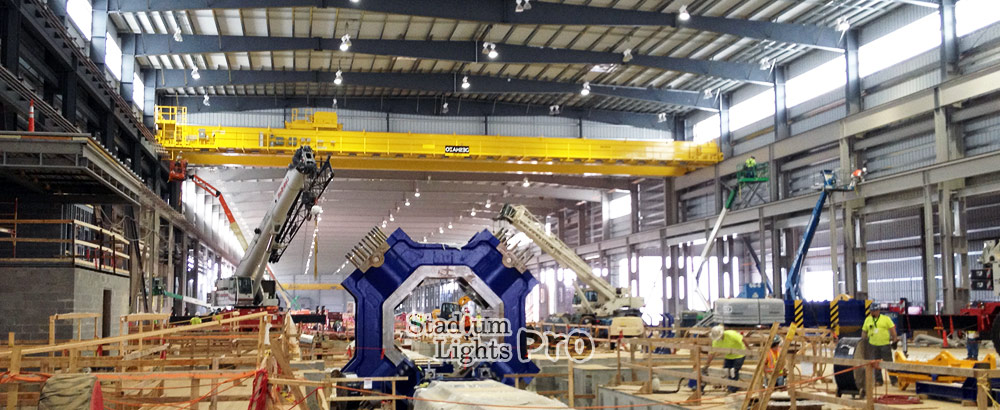
The cost of foundry lighting can vary significantly depending on various factors, including the size of the facility, the type of lighting fixtures used, the quality of the lighting system, labor costs for installation, and ongoing maintenance expenses. Furthermore, the cost can vary by region and the specific needs of the foundry.
High bay LED lights
High bay LED lighting fixtures, which are commonly used for general illumination in large areas of foundries, can range from $100 to $300 or more per fixture. This cost includes the fixture itself and may vary based on the fixture’s quality, brightness, and features.
Task lighting
LED task lights for precision workstations can range from $50 to $150 or more per fixture, depending on factors like brightness and adjustability.
Explosion-proof LED lights
Explosion-proof LED lights are designed for hazardous areas and can range from $200 to $600 or more per fixture. These lights are typically more expensive due to their specialized construction.
Heat-resistant lights
Heat-resistant lighting fixtures are designed for extreme temperatures and can range from $150 to $500 or more per fixture.
Waterproof and dustproof lights
Waterproof and dustproof LED lights may range from $100 to $300 or more per fixture, depending on their IP rating and quality.
Emergency lighting
The cost of emergency lighting systems varies depending on the size and complexity of the installation. It can range from a few hundred dollars for basic exit signs to several thousand dollars for a comprehensive emergency lighting system.
Installation costs
Installation costs can vary widely depending on the complexity of the lighting system, the number of fixtures, and the labor rates in the area. Installation costs may range from a few hundred to several thousand dollars.
Maintenance costs
Maintenance costs for LED lighting are generally lower compared to traditional lighting sources due to the longer lifespan of LED fixtures. However, maintenance costs can still vary depending on the need for occasional cleaning or repairs.
Conclusion
LED lighting has brought about a transformative change in foundries and metal manufacturing plants. Its energy efficiency, durability, and versatility make it the ideal choice for the challenging environments and intricate tasks found in these industries. Beyond its cost-saving benefits, LED lighting also contributes to enhanced safety and productivity. As technology continues to advance, we can expect further innovations in LED lighting tailored specifically to the needs of foundries and metal manufacturing plants, further illuminating the path to a brighter and more efficient future for these industries.
Don’t hesitate to reach out to us for a complimentary lighting design consultation tailored to your foundry or metal manufacturing plant. Our experts are here to assist you in optimizing your lighting system for enhanced safety, productivity, and efficiency. Contact us today to embark on the path to a well-illuminated and successful industrial environment.

